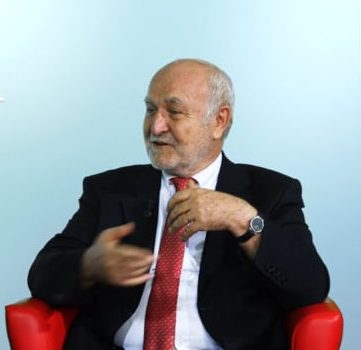Cheryl Guttman Krader
Published: Sunday, October 4, 2020

Theo Seiler MD, PhD
The history, development and complex implications of laser vision correction (LVC) both before and after cataract surgery were all addressed in a fascinating 2020 ESCRS Heritage Lecture delivered by Theo Seiler MD, PhD.
In his talk, Prof. Seiler discussed the overlap between LVC and cataract surgery and the difficulty of obtaining consistently predictable refractive outcomes now that the first-generation of LVC patients has reached cataract age.
The early history of laser vision correction (LVC) was a far cry from the high-tech technological precision that refractive surgeons today take for granted, said Prof. Seiler.
“The first PRK surgeries that I performed were quite rudimentary by modern standards. The eye tracking and the IOL centration were performed using only my hands and my eyes so you can imagine that safety suffered accordingly, “ he said.
Turning to modern cataract surgery, Prof Seiler noted that while significant improvements have been achieved in IOL power calculations due to advances in optical biometry, there is still considerable inaccuracy when it comes to keratometry measurements for post-LVC eyes.
“Studies have shown that despite better preoperative diagnostics that the chance of postoperative refractive surprise is still greater than 20%,” he said.
To counteract this, Prof Seiler advises the routine use of a dedicated corneal tomography unit to determine keratometry in these cases.
“It is also wise to select an IOL type that makes an eventual IOL exchange easier,” he said.
In the final part of his lecture, Prof Seiler discussed the possible benefits of LVC to fine-tune the outcomes of cataract surgery.
In his published series of 56 eyes of 42 patients who were dissatisfied after cataract surgery with implantation of a trifocal IOL, Prof Seiler said that selective wavefront-guided LASIK greatly improved the outcomes, with target refraction obtained in 98% of eyes and patient satisfaction greatly enhanced.
Tags: Theo Seiler, ESCRS Virtual Congress 2020
Latest Articles
Organising for Success
Professional and personal goals drive practice ownership and operational choices.
Read more...
Is Frugal Innovation Possible in Ophthalmology?
Improving access through financially and environmentally sustainable innovation.
Read more...
iNovation Innovators Den Boosts Eye Care Pioneers
New ideas and industry, colleague, and funding contacts among the benefits.
Read more...
From Concept to Clinic
Partnerships with academia and industry promote innovation.
Read more...
Making IOLs a More Personal Choice
Surgeons may prefer some IOLs for their patients, but what about for themselves?
Read more...
Need to Know: Higher-Order Aberrations and Polynomials
This first instalment in a tutorial series will discuss more on the measurement and clinical implications of HOAs.
Read more...
Never Go In Blind
Novel ophthalmic block simulator promises higher rates of confidence and competence in trainees.
Read more...
Simulators Benefit Surgeons and Patients
Helping young surgeons build confidence and expertise.
Read more...
How Many Surgeries Equal Surgical Proficiency?
Internet, labs, simulators, and assisting surgery all contribute.
Read more...

 Theo Seiler MD, PhD
Theo Seiler MD, PhD